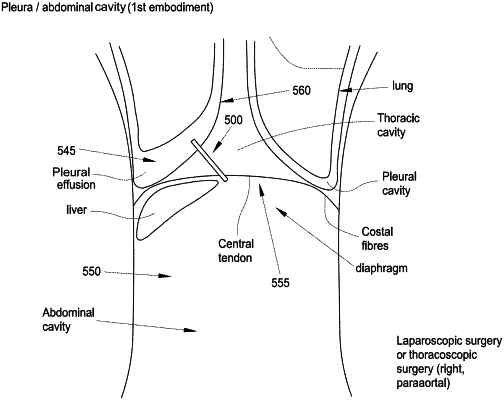| CPC A61M 27/002 (2013.01) [A61M 39/24 (2013.01); A61M 2039/242 (2013.01); A61M 2039/2406 (2013.01); A61M 2039/248 (2013.01); A61M 2039/2426 (2013.01); A61M 2039/2433 (2013.01); A61M 2039/2473 (2013.01); A61M 2039/2486 (2013.01); A61M 2202/0401 (2013.01); A61M 2205/04 (2013.01); A61M 2210/1017 (2013.01); A61M 2210/12 (2013.01)] | 11 Claims |

|
1. A method for treating pleural effusion in a patient, the method comprising:
providing a valve comprising:
a body having a distal end, a proximal end and a lumen extending therebetween;
an inlet disposed at the proximal end of the body, the inlet being fluidically connected to the lumen;
an outlet disposed at the distal end of the body, the outlet being fluidically connected to the lumen; and
at least one valve element disposed in the lumen of the body, the at least one valve element being a one-way valve element configured to permit the passage of fluid in a single direction through the lumen of the body; and
implanting the valve in the body of the patient such that the inlet of the valve is fluidically connected to the pleural cavity of the patient, and such that the outlet of the valve is fluidically connected to a second body cavity;
wherein the second body cavity comprises the abdominal cavity;
wherein the valve is implanted in the body of the patient by accessing the thoracic cavity and advancing the distal end of the body of the valve through the parietal pleura, through the diaphragm and into the abdominal cavity, such that once implanted in the patient, the proximal end of the body of the valve is disposed in the pleural cavity, the distal end of the body of the valve is disposed in the abdominal cavity and the body of the valve passes through the parietal pleura and the diaphragm of the patient.
|